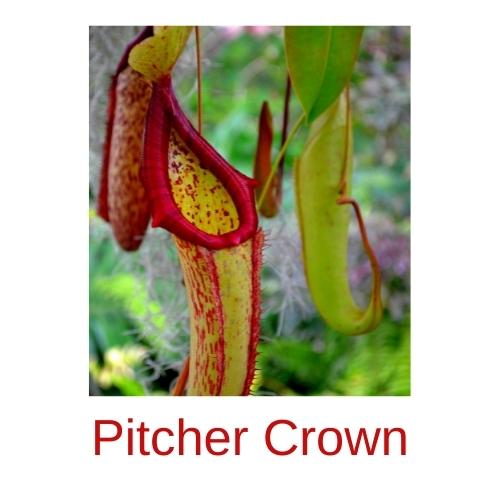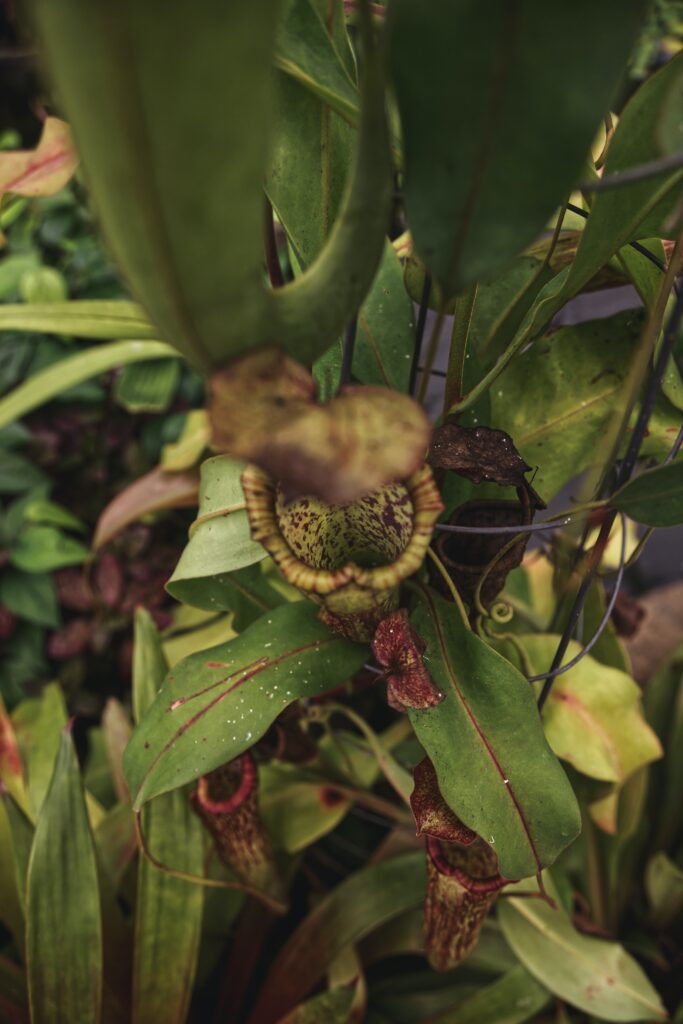The Purple Pitcher Plant, also known by its scientific name Sarracenia purpurea, is a carnivorous plant native to North America. Purple Pitcher Plants get their common name from their characteristic pitcher-shaped leaves (with nectar), which are used to trap and digest insects.
These plants are found in a variety of habitats, including bogs, fens, and savannas. Purple Pitcher Plantis hardy and easy to grow, making it a popular choice in the garden for beginner carnivorous plant enthusiasts. These plants can be propagated by seed or division, and they will thrive on a bright windowsill or under artificial lighting.
When Does A Purple Pitcher Plant Bloom?
Purple Pitcher Plant is typically found in shades of purple, but it can also be red, pink, or white. These plants flower in the spring and summer, and their flowers are pollinated by bees and other insects. If you’re looking for an interesting and unusual plant to add to your collection, the Purple Pitcher Plant is a great choice!
Purple Pitcher Plant In Different Locations
The Sarracenia pitchers are the sole type of pitcher plants found throughout New England. Carnivorous foods are important for their thriving in a low–nitrogen environment in peat bogs. The insect is attracted to the red and purple pitcher, and the hairs are angled upward and are blocked from escaping.
It falls through the fluid in leaf tissue where it passes to predatory organisms such as larvae in insects, flesh fly flies, and others.
While it is most commonly found in the southeastern United States, it can also be found in parts of Canada and Mexico.
Purple Pitcher Plant In North America
Native American people also utilized root extracts from northern species for diuretic and anti-diabetic properties. This carnivorous plant is native to North America and can be found in wetland areas from Nova Scotia to Alabama.
Sarracenia Purpurea is the state flower of Louisiana. It can be found in swampy areas and bogs. Sarracenia Purpurea is a member of the Sarraceniaceae family. Other species of this family include Sarracenia flava and Sarracenia leucophylla.
Other Names For Sarracenia Purpurea
Other names for Sarracenia Purpurea include the following: purple pitcher plant, northern pitcher plant, and green dragon. Sarracenia Purpurea is an unusual and fascinating plant that is well worth studying.
The Purple Pitcher Plant is also known by a number of other names, including the Side-Saddle Flower, and the Sweet Pitcher Plant.
Medicinal Benefits Of Sarracenia Purpurea
The plant’s rootstock has been used traditionally to treat digestive issues, while more recent studies have shown that it may also have anti-cancer properties.
It has been used historically to treat a variety of conditions including toothache, colds, flu, and sore throat. More recently, studies have shown that Sarracenia purpurea has antiviral activity against influenza a virus, making it a potential treatment for this serious respiratory illness.
Additional research is needed to confirm these results, but take note: Sarracenia purpurea may one day be recognized as an important medicinal plant.
What To Feed Purple Pitcher Plants?
What to feel purple pitcher plants is a question that many gardeners have. While these plants are easy to grow, they can be picky about what they eat. In the wild, purple pitcher plants get their nutrients from whatever insects happen to fly into their trap.
The plant has digestive enzymes that help it absorb nutrients from the bugs. Insects are attracted by the nectar and then struggle to escape.
However, when grown in captivity, they need to be fed a more reliable diet. The best way to do this is to use a small paintbrush or chopstick to place live prey, such as tiny flies or moths into the pitchers. These items can be purchased from a pet store or online retailer.
Once a week should be sufficient, but you may need to increase the frequency if the plant is particularly large or active. With a little patience and trial and error, you can successfully keep your purple pitcher plant well-fed and healthy.
What Gives A Purple Pitcher Plant Its Purple Shade?
The purple pitcher plant gets its purple shade from a molecule called anthocyanin. Anthocyanin is a water-soluble pigment that is found in many flowers and fruits. It is responsible for the red, blue, and purple colors that are often seen in nature.
In the purple pitcher plant, anthocyanin is produced in the leaves and petals. The amount of anthocyanin that is produced can vary depending on the level of light exposure and the pH of the soil.
Factors That Cause Higher Levels Of Anthocyanin
When the leaves are exposed to more light, they will produce more anthocyanin in order to protect themselves from the harsh sun rays. Similarly, when the soil is more acidic, the leaves will produce more anthocyanin in order to protect themselves from acidity.
The purple pitcher plant is able to produce such a large amount of anthocyanin because it contains more enzymes for producing anthocyanin than other plants. These enzymes are what give the purple pitcher plant its purple shade.
Ideal Soil Mix For Sarracenia Purpurea
Sarracenia purpurea grows best in acidic soils with a pH of 4.5 to 5.5. The soil should be light and well-drained, as the plant does not tolerate standing water.
A good potting mix for S. purpurea should contain two parts sphagnum peat moss to one part perlite or sand. The mix should be moistened before planting and allowed to drain completely. For best results, the soil mix should be kept moist but not soggy.
Indoor vs Outdoor Growth
When grown in ideal natural habitat, sarracenia purpurea will produce large, dark red-purple pitchers that are up to 18 inches in length. These pitchers are highly attractive to insects, making S. purpurea an excellent choice for those looking to add a unique touch to their landscape or garden.
The Purple Pitcher Plant: A Summary
The beautiful purple pitcher plant gets its name from the leaves, which are shaped like pitchers and are often purple in color. The stem of the plant is also purple, and typically the species grows to be about 3 feet tall in length.
The purple pitcher plant is a protected species in some states and is considered to be endangered in others. It is threatened by habitat loss and degradation, as well as by collectors who remove plants from the wild.
If you are thinking of adding a purple pitcher plant to your home, be prepared for it to have a life cycle of just a few years. However, with proper care, you can extend its life span and enjoy its unique beauty for many years to come.








